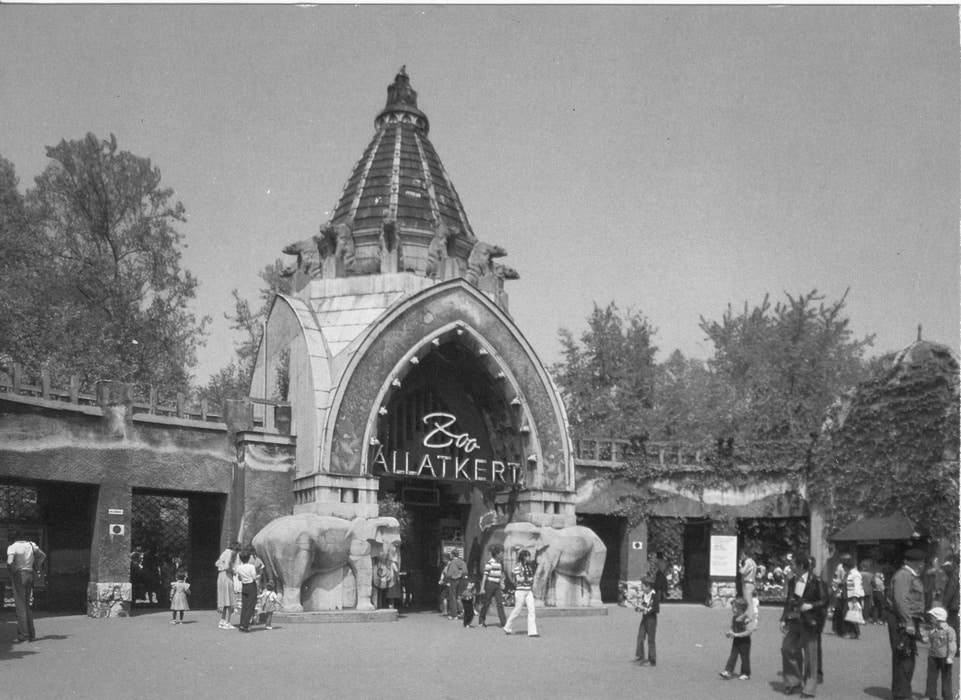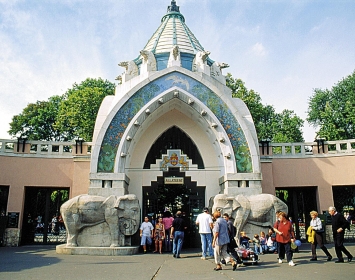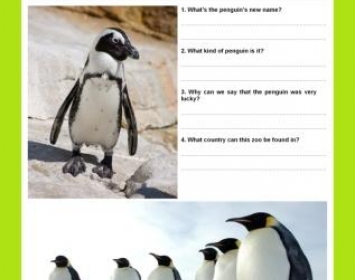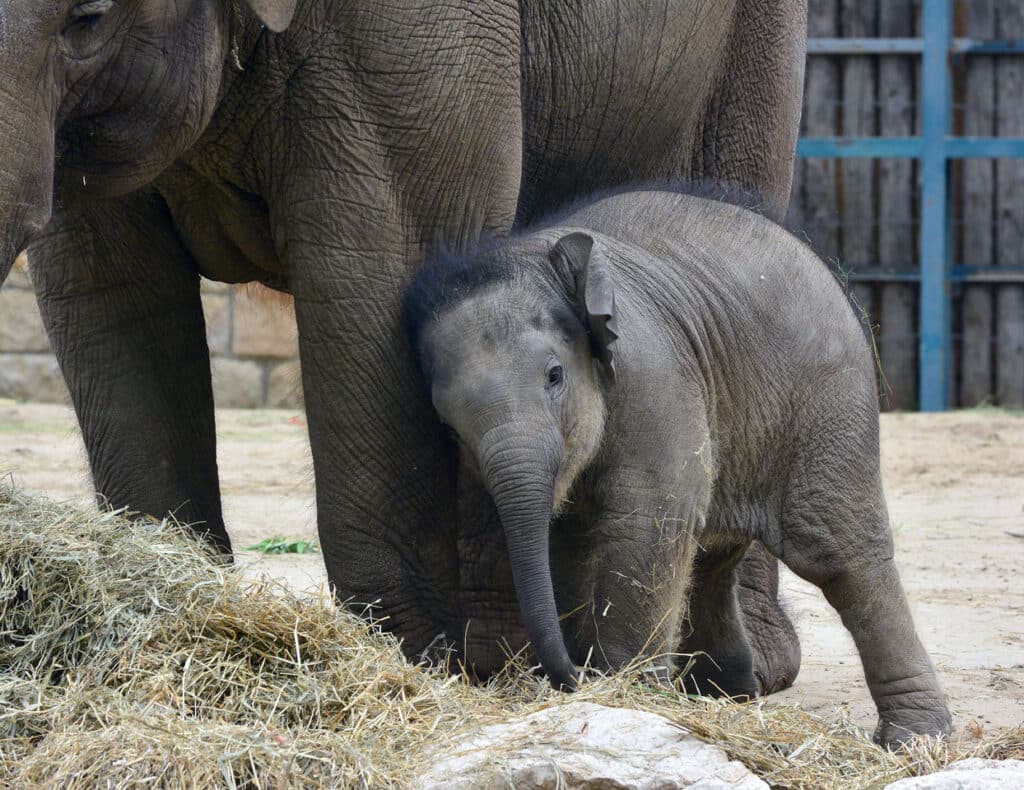The Budapest Zoo and Botanical Garden, one of the oldest – and we could say one of the most beautiful – zoos in the world, celebrates its 150th anniversary this year. The idea of a zoo was already proposed in the 1820s and 1830s but history stepped in and it was only in 1866 that the dream finally turned into reality.
Besides indigenous species the zoo also had several different species of monkeys and parrots, as well as camels and kangaroos, some of them donated to the Zoo by Emperor Franz Joseph and transferred from the Schönbrunn Zoo. There were, however, no lions, tigers or elephants at that time. The first giraffe arrived two years later with the help of Queen Elizabeth, better known as Sisi. Not much later, the first Lion house was opened in 1876 with lions and tigers as well. An elephant, a hippopotamus and a rhinoceros were also added to the collection, but a brown bear called Kristóf is said to have enjoyed the greatest popularity.
In the beginning the zoo housed only animals but in 1872 the construction of the botanical garden started. In the late19th century circus performances were also held here, with artists such as tightrope dancers, fire eaters, sword swallowers performing. It’s even stranger for us now, but a few African and Indian families were also moved to the zoo for a while to join the animals from their region performing live shows. Still, interest in the zoo waned and finally the company operating the zoo went bankrupt in 1907. The government took over and between 1909 and 1912 the zoo was closed for reconstruction. Most of the emblematic historic buildings of the park were constructed at that time. These artistically designed animal houses, like the award-winning Eastern-style Elephant House, replaced the original buildings. Some of them, like the Crocodile House, the Buffalo House, and the Giraffe House have recently been reconstructed. The main gate with the elephants was also erected in 1912, ornamented with world-famous Zsolnay Porcelain ceramics and mosaics, which were made at the factory of Miksa Róth, a great figure of applied arts. Besides the animal houses, a 34-metre tall Great Rock was constructed from reinforced concrete with trenches separating the visitors from the animals. Unfortunately, development was interrupted by the First World War. The Second World War brought about even more catastrophic consequences as the zoo was almost entirely destroyed with only 15 animals surviving.
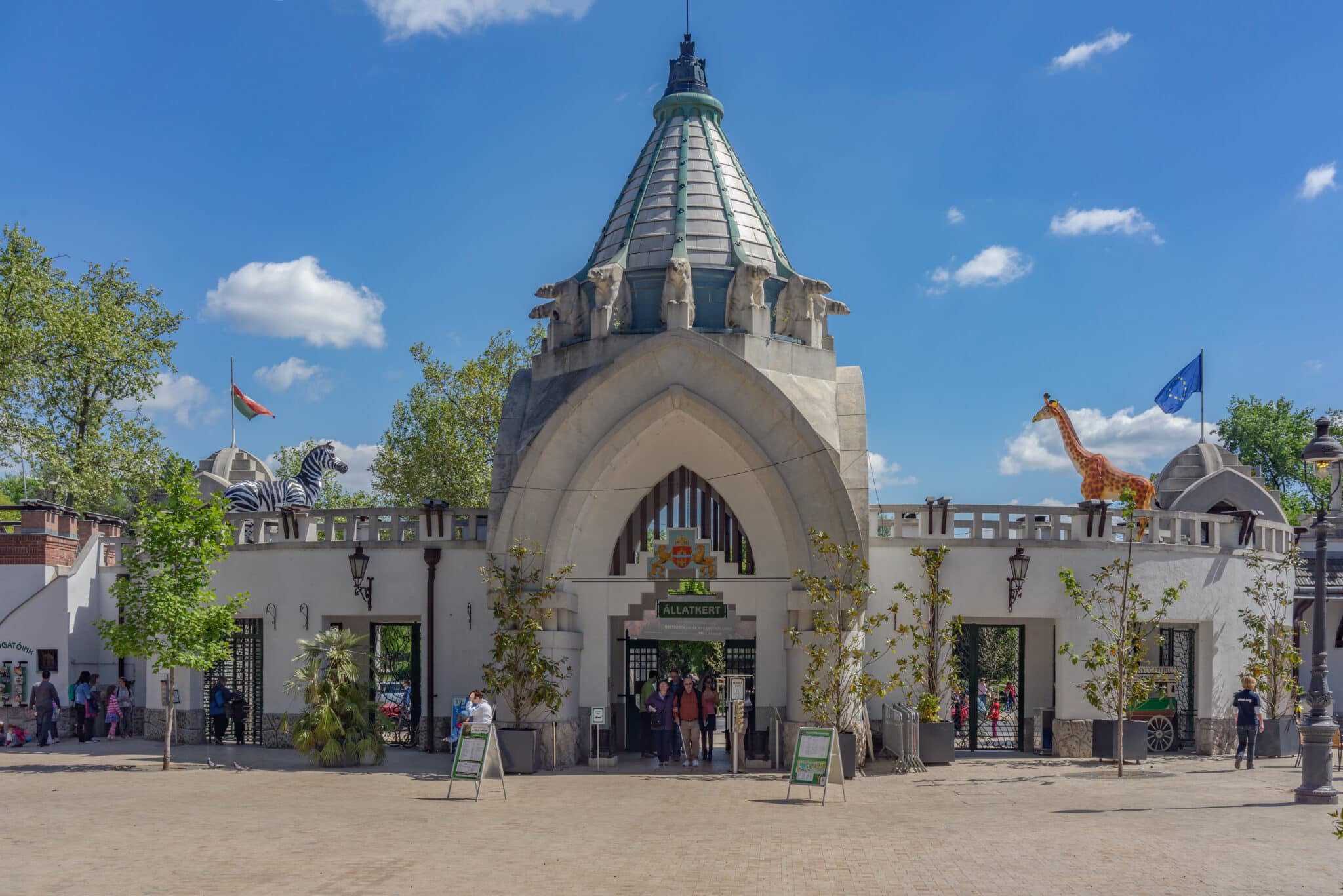
It was reopened with only a few dozen animals and dilapidated buildings and there was major modernization and development under way in the 1950s and 1960s. The historic buildings with their astonishing architecture were restored to their original splendour between 2003 and 2007. Each of them is a protected historical monument now. The zoo also made history in 2007 with Layla, the first rhinoceros ever to be born with artificial insemination. Since then other developments have taken place, like a Magic Mountain, which was built inside the Great Rock and the Madagascar House. There is also a playground for children, with a huge whale to climb, which spurts water on them every few minutes.
The territory of the zoo has also been expanded recently, incorporating the area of the former amusement park. The zoo continues to develop with a fairy-tale park and a Biodome under construction. The Biodome, which will be even bigger than the famous Palm House will look like a hill covered with grass and will have large glass surfaces on the top to let the sunshine in. It will be the home of several animals and plants species.
There are more than eight hundred species and eight thousand animals in the park. Samu the alligator, who is more than 70 years old, is the oldest, living here since 1952 and Assam the elephant is the heaviest. With so many things to see and enjoy – including plenty of leisure activities and exciting events – it’s no wonder that the zoo has nearly one million visitors a year.
During the summer, for example, there are special night events, when, after opening hours, professional guided tours take the visitors around the zoo to discover the otherwise hidden life of the zoo behind the bars and glass walls. Zoo camps offer schoolchildren the opportunity to get to know the behind the scenes life of the place in summer. The kids can feed the animals, can clean their living spaces and with the unforgettable experience they earn, the otherwise dry and boring school material they have to learn about animals during the school year comes alive and gets a new meaning. Concerts are also held in the garden in the summer and in winter Santa Claus pays a visit, distributing gifts to children. If you want to support the well-being of your favourite zoo animal you can symbolically adopt it and receive an exclusive certificate about becoming its proud parent.
At the birthday celebration of the zoo, the bell of the zoo, which used to signal closing time, was sounded again and the confectioners of the famed Gundel restaurant just adjacent to the zoo prepared a special birthday cake with the oldest building, the Owl Castle decorating it. A special stamp block was issued by the Hungarian Post and silver and brass commemorative coins by the National Bank for the event. You can join in the celebration and pay a visit to the zoo on a beautiful autumn day if you will.
by István Dezsényi and Ágnes Salánki
Vocabulary
to propose | javasolni |
indigenous | őshonos |
species | faj, fajok |
to donate | adományozni |
hippopotamus | víziló |
rhinoceros | orrszarvú |
tightrope dancer | kötéltáncos |
sword swallower | kardnyelő |
to wane | csökkenni, gyengülni |
to go bankrupt | csődbe menni |
emblematic | jellegzetes |
award-winning | díjnyertes |
to ornament | díszíteni |
applied arts | iparművészet |
trench | árok |
dilapidated | lerobbant |
astonishing | döbbenetes |
splendour | ragyogás, szépség |
artificial insemination | mesterséges megtermékenyítés |
whale | bálna |
to spurt | kilövellni |
to incorporate | magában foglalni |
amusement park | vidámpark |
surface | felület |
bars | rácsok, ketrec |
to distribute | kiosztani |
to adopt | örökbe fogadni |
to sound | megszólaltatni |
adjacent to | szomszédos |
commemorative coin | emlékérme |

